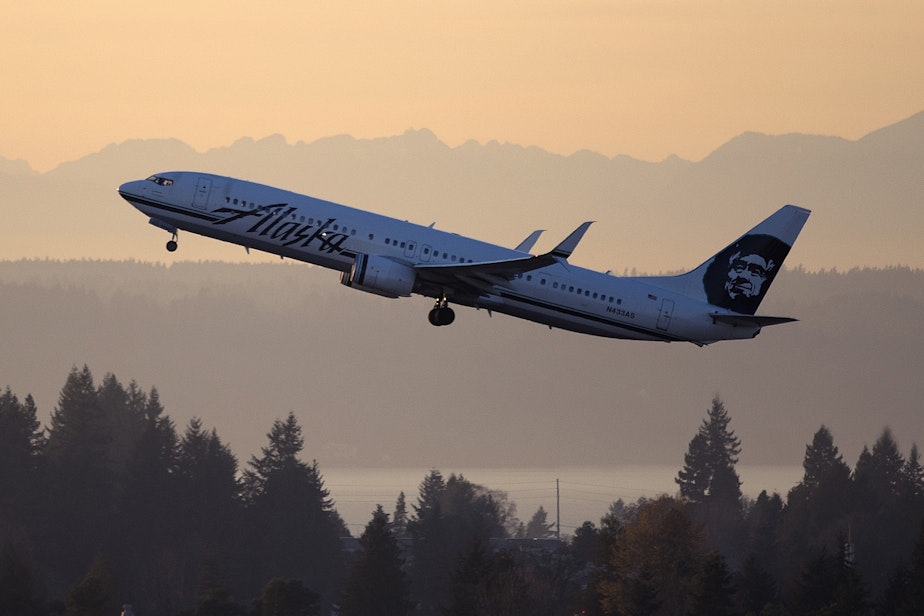Sea-Tac planes are emitting a unique kind of pollution —and it's not regulated

Airplanes at Sea-Tac airport are polluting the communities below with tiny "ultrafine" particles that are uniquely from jets.
That's according to first-of-its-kind research about the airport, from the University of Washington.
Scientists know a lot about ultrafine pollution that comes from cars. The tiny particles come from the engine's combustion process and can travel deep into the human body.
Very little is known about pollution from plane engines, however.
Researchers at UW's Department of Environmental and Occupational Health Sciences spent two years working to find out more.
According to the study, pollution builds up at concentrated levels near plane landing strips. The particles resemble the pollution that's emitted by car engines, but it is even finer and includes less "black carbon soot" than vehicle emissions.
Sponsored
Researchers started calling it "ultra-ultrafine pollution" because it's so small.
Sponsored
"It does seem to be related to the flight paths," said UW professor Edmund Seto, a co-principal investigator on the study.
"The aircraft that are flying in and out of Sea-Tac are following a pretty straight line, so [in] those communities that are directly below the flight paths we tend to see slightly higher concentrations."
Those communities include SeaTac, Highline, Rainier Valley, Angle Lake and Des Moines.
In other words, communities north and south of Sea-Tac International Airport are getting polluted by jet engines, and the particles are so small they're not visible.
"With these ultrafines, they're so tiny that you won't see them in the air, and you'll inhale them, [but] you won't smell them either. They do get into your body and they can spread through a number of different places and cause toxicological effects," Seto said.
Sponsored
Seto said health officials know little about the ultra-ultrafine pollution falling from jet engines because it has not been studied specifically. Ultrafines as a whole — which can include jet, vehicle, or other emissions — are linked breast cancer, heart disease, prostate cancer and a variety of lung conditions.
The particles are less than 0.1 micron in diameter, 700 times thinner than the width of a single human hair, according to UW.
The study was requested and paid for by the Washington state legislature. More than a dozen other agencies, cities, and elected officials also supported the study.
The Port of Seattle, which operates Sea-Tac International Airport, was involved in funding and also in the study's advisory group.
A Port of Seattle spokesperson said, "We support efforts to close gaps in the available science around particulate emissions... For this reason, we continue to urge the Washington State Legislature to move quickly towards statewide progressive carbon policy that encourages the adoption of low-carbon transportation fuels."
Sponsored
Seto said more needs to be researched about plane pollution and whether it should be regulated, especially as air travel increases and Washington considers adding another large airport.
Ultrafines are not regulated under clean air laws like bigger particles from wood smoke.




